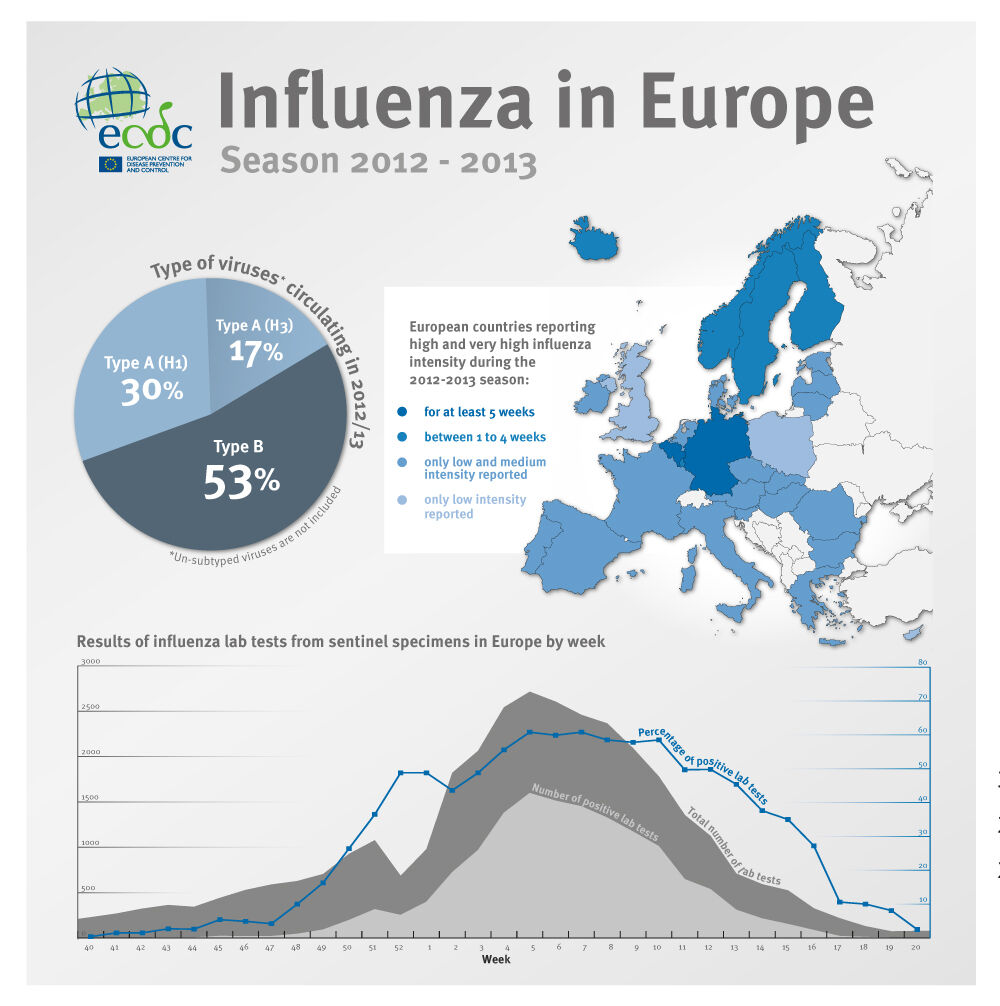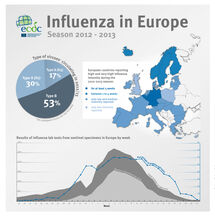Summary of the influenza 2012–2013 season in the WHO European region
The 2012–2013 influenza season was of a slightly longer duration than the 2011–2012 season, starting around week 48/2012, peaking around week 5/2013 and lasting until week 16/2013.

Download

Influenza in Europe, summary of the season 2012–13
The 2012–2013 influenza season was of a slightly longer duration than the 2011–2012 season, starting around week 48/2012, peaking around week 5/2013 and lasting until week 16/2013.
In general, influenza morbidity rates were higher than in the previous season. Influenza activity was reported as low or medium, with 11 countries reporting higher than usual levels of influenza activity at some point in time over the entire season, compared to 4 countries reporting higher than usual levels in the previous season. All 3 seasonal influenza viruses co-circulated this season, with, in general, influenza A viruses predominating early in the season followed by influenza B. Overall, 63% of viruses were influenza A and 37% influenza B and of the sub-typed influenza A viruses, about two thirds were A(H1N1)pdm09 and one third A(H3N2). Severe cases occurred mainly in those above 15 years of age and were due mainly to A(H1N1)pdm09 and influenza B. Excess pooled all-cause mortality as determined in up to 18 countries that participate in the European Mortality Monitoring Project (EuroMoMo) project was only observed in persons above 64 years of age and was comparable with the previous season.
The majority of influenza viruses that were characterized antigenically corresponded to those recommended by WHO for inclusion in the current northern hemisphere seasonal influenza vaccine, suggesting a good match of circulating viruses with the seasonal influenza vaccine. Monitoring of viruses for susceptibility to neuraminidase inhibitors showed no indication of increased resistance to these influenza antiviral drugs in circulating viruses this season. All viruses screened for susceptibility to adamantanes were found to be resistant.







